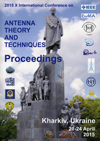Engineering style of thinking as objective of technical education
DOI:
https://doi.org/10.1109/ICATT.2015.7136800Keywords:
technical education, style of thinking, mathematical description, physical interpretation, motivation, teaching toolsAbstract
The most important feature of technical competence is a particular kind of mind that can be called an engineering way of thinking. Higher technical education must be completely imbued with an idea of encouraging students to gain necessary skills and master techniques to do so. The author discusses basic elements of the issue and presents some of the learning strategies developed by him for many years of teaching in the electromagnetics and antenna technique. They can be useful to others lecturers, regardless of subject they teach.References
http://en.wikipedia.org/wiki/List_of_thought_pro.
DAVIS, B. Inventions of Teaching: A Genealogy. London: Routledge, 2004, 344 p.
KIRTON, M. Adaptors and innovators: a description and measure. Journal of Applied Psychology, 1976, v.61, n.5, p.622-629, doi: http://dx.doi.org/10.1037/0021-9010.61.5.622.
STUM, J. Kirton's Adaption-Innovation Theory: Managing Cognitive Styles in Times of Diversity and Change's. Emerging Leadership Journeys, 2009, v.1, n.2, p.66-78.
GULENKO, V.V. Forms of Thinking. Socionics, Mentality and Psychology of Individuals, 2002, v.43, n.4.
KRASNOVA, V.I. Implementation of the competency approach in the educational process of high school. Kazanskiy Pedagogical Journal, 2009, v.3, p.10-14.
ZHUK, O.L. Teaching Students: Competence Approach. Minsk: RIHS, 2009, 336 p.
http://www.aoc.nrao.edu/~lkogan/Millimetron.pdf.
KARASIK, B.S.; SERGEEV, A.V. THz hot-electron photons counter. IEEE Trans. Applied Superconductivity, 2005, v.15, n.2, p.618-623, doi: http://dx.doi.org/10.1109/TASC.2005.849963.

